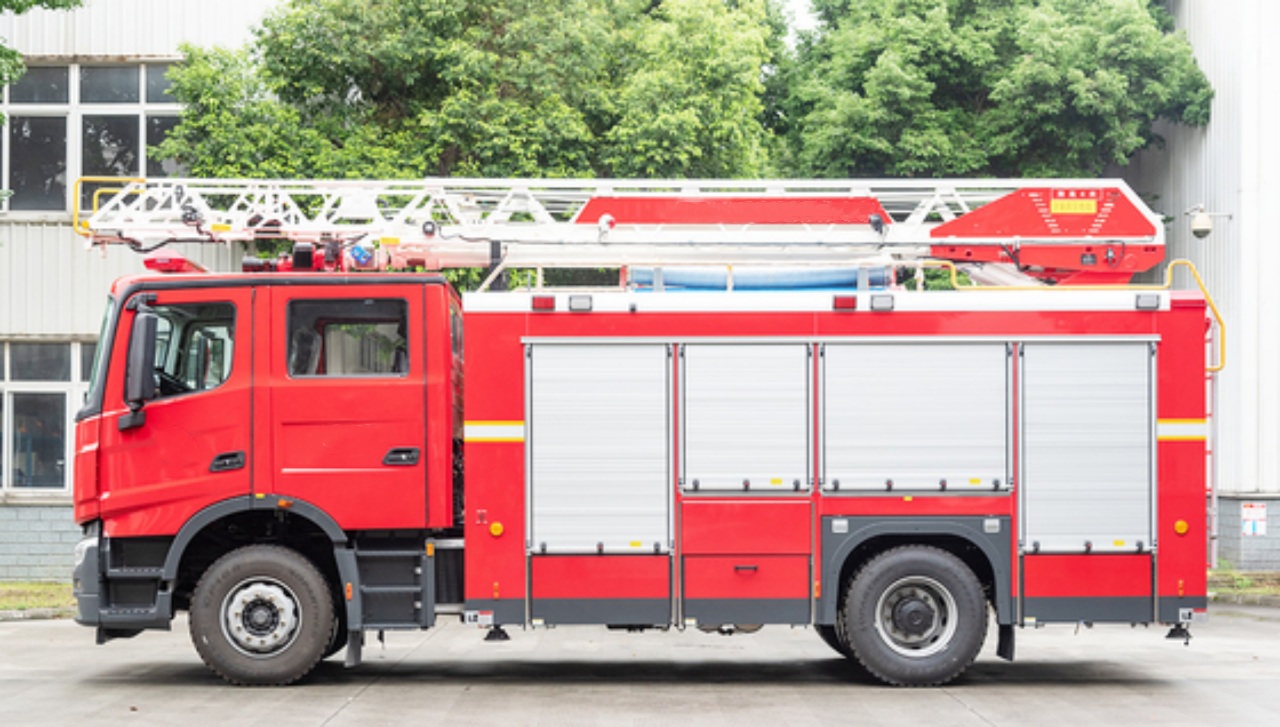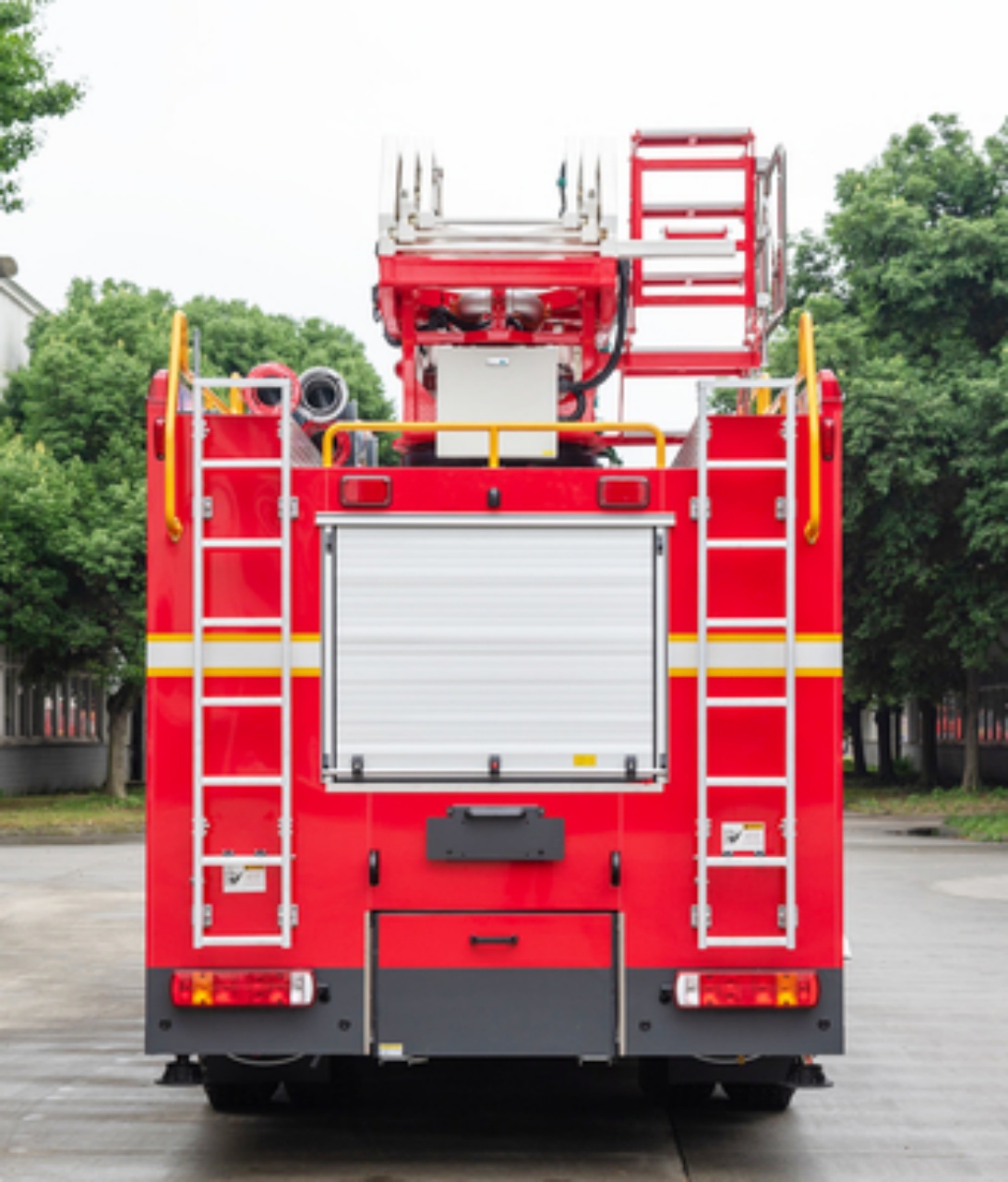Firefighting is an essential public service that requires specialized vehicles to combat different emergencies efficiently. Among the most recognizable fire trucks are ladder trucks and tower trucks, both of which play a crucial role in firefighting and rescue operations. However, despite their similarities, these 2 types of fire trucks have distinct differences that affect their usage, functionality, and performance in the field. In this article, we will delve into the key differences between a ladder truck and a tower truck, exploring their design, operation, and applications.
Definition and Purpose
Ladder Truck
A ladder truck, also known as an aerial ladder truck, is a firefighting vehicle equipped with an extendable, straight ladder mounted on a turntable. This type of fire truck is primarily used to provide firefighters with access to elevated areas such as multi-story buildings, rooftops, and high-rise structures. The ladder extends to great heights and is often used for rescues, fire suppression, and ventilation operations. Ladder trucks are designed to quickly deploy their ladders, allowing firefighters to climb or carry equipment to hard-to-reach locations.
Tower Truck
A tower truck, often referred to as a tower ladder truck or an aerial platform truck, is a fire truck equipped with an extendable boom that supports a working platform or bucket at the end. Unlike ladder trucks, tower trucks provide a stable and secure work area for firefighters, allowing them to operate at height without having to climb a ladder. Tower ladders are used for fire suppression, rescues, and ventilation, similar to ladder trucks, but they offer increased safety and maneuverability in certain situations.
Key Differences
1. Structural Design
One of the most notable differences between ladder trucks and tower trucks is their structural design:
- Ladder Truck: Features a straight, extendable ladder that provides direct access to high points. The ladder can be positioned at various angles but lacks a bucket or platform at the tip.
- Tower Truck: Incorporates a telescopic or articulating boom with a platform (bucket) at the end. This design allows firefighters to stand in a secure, enclosed space while operating at height.
2. Operational Mechanism
The way these trucks operate also differs significantly:
- Ladder Truck: Firefighters must climb the ladder manually or use it as a conduit for hose lines and rescue operations.
- Tower Truck: Firefighters can remain inside the bucket while being elevated, which enables easier handling of equipment, better positioning for hose operation, and enhanced stability.
3. Safety and Stability
Safety is a critical factor in firefighting, and the design of these vehicles impacts how safely firefighters can work:
- Ladder Truck: Requires firefighters to secure themselves with harnesses when climbing, increasing physical exertion and the risk associated with high-altitude operations.
- Tower Truck: Provides a more stable platform with railings, allowing firefighters to work securely without climbing the ladder.
4. Reach and Maneuverability
The reach and maneuverability of these vehicles depend on their intended use and design:
- Ladder Truck: Typically has a longer reach, making it ideal for high-rise rescues and roof access. However, the ladder must be positioned at a precise angle for effective deployment.
- Tower Truck: The boom and bucket system offers more flexibility in positioning, making it easier to access windows, balconies, and tight spaces.
5. Fire Suppression Capabilities
While both vehicles can support water delivery, their methods differ:
- Ladder Truck: Can be equipped with a master stream nozzle, but firefighters usually have to position hoses manually.
- Tower Truck: Has built-in water nozzles in the bucket, allowing firefighters to direct water from a secure platform without handling hoses directly.
6. Deployment Time and Efficiency
The time required to set up and deploy these trucks varies:
- Ladder Truck: Generally faster to deploy as the ladder can be extended quickly.
- Tower Truck: It takes slightly longer to set up due to the hydraulic system and platform adjustments, but it provides greater operational convenience once in place.

Applications and Best Uses
When to Use a Ladder Truck
Ladder trucks are best suited for:
- Rapid deployment in emergency scenarios where time is critical.
- Rescues involving people trapped on rooftops or high-rise buildings.
- Ventilation operations where firefighters need to reach the upper floors of burning buildings quickly.
- Narrow streets or areas where space is limited, as they are generally more maneuverable than tower trucks.
When to Use a Tower Truck
Tower trucks are ideal for:
- Situations requiring extended operations at height, such as prolonged firefighting efforts.
- Rescues where victims need to be lifted safely in a bucket rather than climbing a ladder.
- Directing high-volume water streams with greater control and safety.
- Firefighting scenarios are where stability and worker safety are top priorities.

Pros and Cons of Each Truck
Ladder Truck Pros:
- Faster deployment
- Longer reach
- Easier to maneuver in tight spaces
- Lighter and more mobile
Ladder Truck Cons:
- Requires firefighters to climb manually
- Less stability for working at height
- Increased risk of falls
Tower Truck Pros:
- Greater safety and stability
- Enhanced firefighting capabilities with built-in nozzles
- Easier to use for rescues
- More flexible positioning options
Tower Truck Cons:
- Longer setup time
- Bulkier and harder to maneuver
- More expensive and requires additional training
Conclusion
Both ladder trucks and tower trucks are indispensable assets for fire departments, each serving specific roles in emergency response. The choice between a ladder truck and a tower truck depends on various factors, including the type of emergency, terrain, space availability, and operational priorities. Ladder trucks are valued for their speed and reach, while tower trucks provide a safer, more stable working environment for firefighters. Understanding these differences helps fire departments optimize their response strategies, ensuring they have the right tools for every situation.








